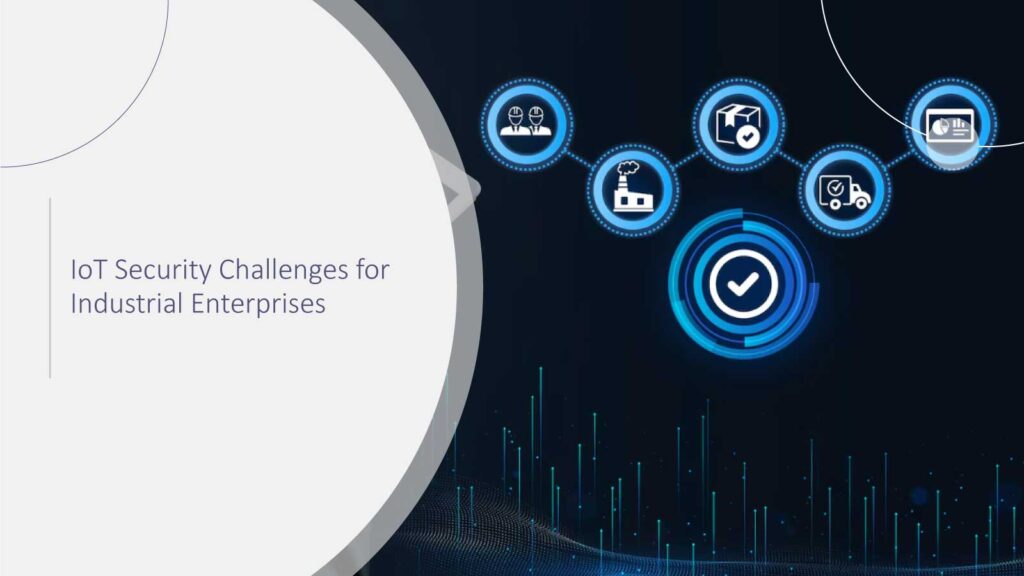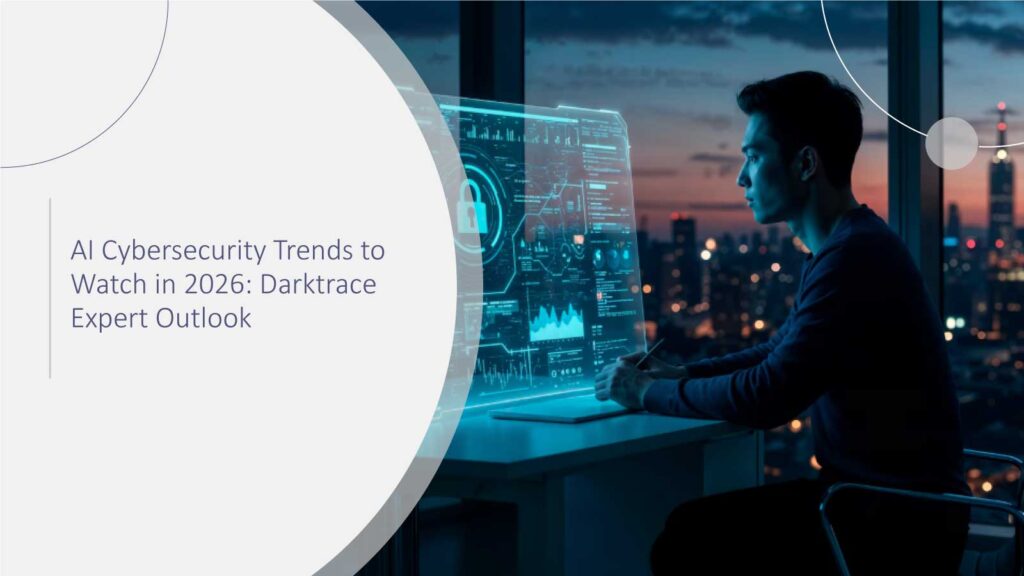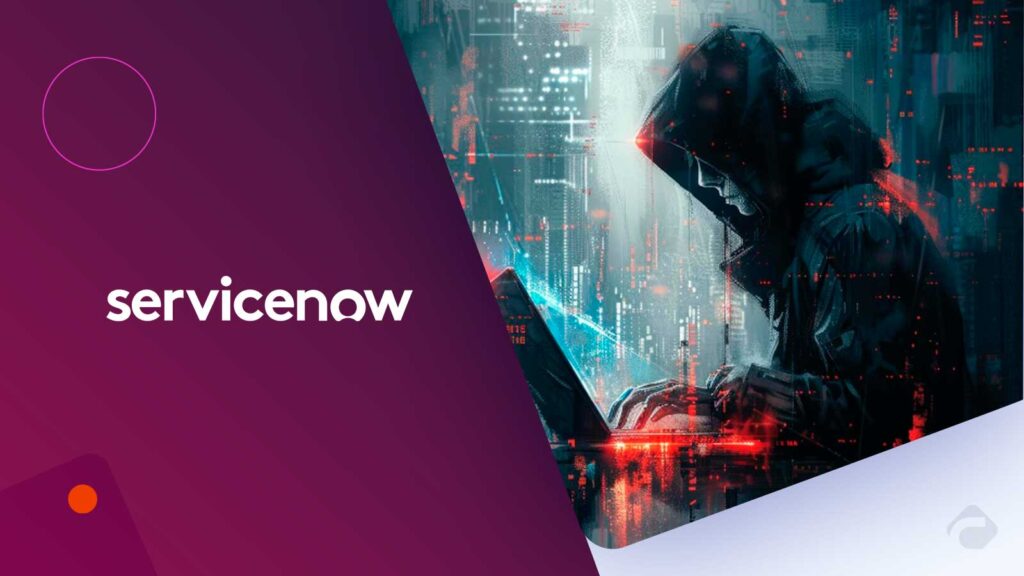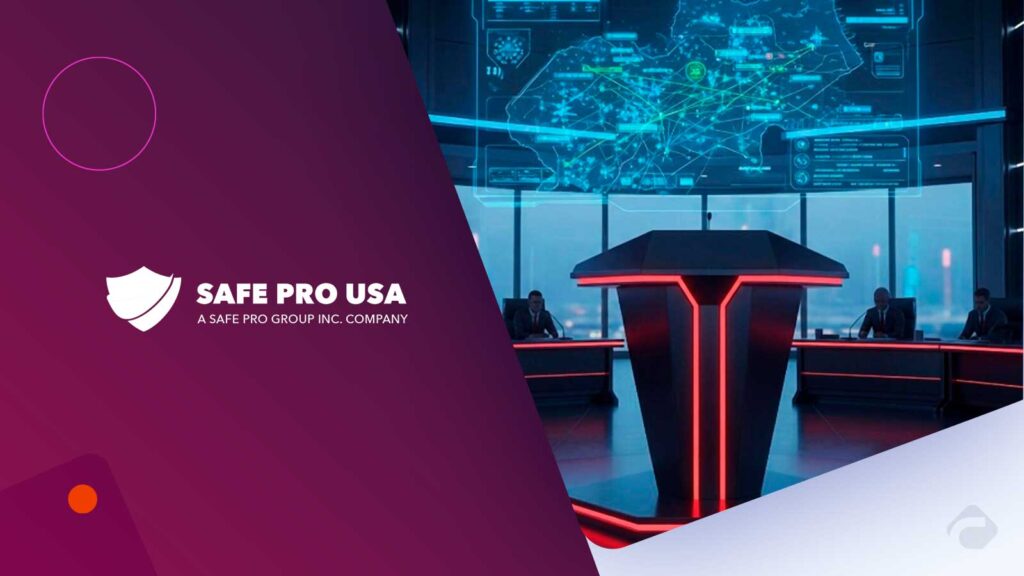IoT security has become a mission-critical priority for industrial enterprises in 2025. The rapid deployment of Industrial IoT (IIoT) can transform manufacturing, energy, logistics, and healthcare, connecting sensors, control systems, and analytics platforms. New connections create new vulnerabilities, and each additional connection increases both the risk of exposure and the experience of unsolicited or illegal access to critical infrastructure.
IIoT Security is more complicated than consumer IoT security for industrial environments, which bring high-risk systems where exposure, downtime, or data loss may result in life-threatening consequences. This article will identify the significant IIoT security challenges facing industrial enterprises in 2025 and offer security-related solutions that successfully protect the end-user operation as IIoT environments further develop into a highly connected and contested digital ecosystem.
The Industrial IoT Landscape and Why Security is Different Here
Industrial IoT goes beyond simple connected devices and is instead a convergence of operational technology (OT) and information technology (IT) to create intelligent, automated industrial ecosystems. This includes programmable logic controllers (PLC), supervisory control and data acquisition (SCADA) systems, and unique industrial control systems (ICS). In this environment, IoT security protects systems from breaches that can take down energy grids, shut down manufacturing lines, or threaten the lives of individuals.
The challenges vary immensely due to the origins of these systems. OT infrastructure was conceived with reliability, accuracy, safety, and a long lifespan in mind, not cybersafety. Many of these systems still rely on legacy protocols, like Modbus and DNP3, which lack any encryption or authentication. Therefore, when these systems find connectivity in modern networks or cloud platforms, they inherit the same threats as systems sharing the same enterprise networks as IT systems, but without the cyber protections.
Recent occurrences and disruptive events highlight the stakes. Stuxnet manipulated PLC’s to penetrate an organization conducting nuclear operations. Triton/Trisis penetrated the safety instrumented systems of a petrochemical facility. Another recent incident was the Oldsmar water facility breach in 2021, where the attacker attempted to change the levels of chemicals in drinking water. Each of these events demonstrates the urgency for organizations to build security as part of IoT strategies in the industrial sector- enabling the secure evolution of emerging IoT deployments while also protecting existing technology infrastructures. In the industrial IoT environment, security is not an IT concern but the basis for operating resilience and safety.
Infrastructure, Legacy, and OT Weakness
Numerous industrial facilities continue to operate systems that were built decades ago. These legacy assets were built before cybersecurity became a focus. In any IoT security context, legacy systems offer inherent difficulty because the types of control systems, PLCs, and SCADA devices do not have encryption, authentication, or patching capabilities. In some cases, protocols such as Modbus and DNP3 transmit data in clear text. For an attacker with a short amount of time, stealing or altering commands is easy. Legacy devices are very effective targets when they funnel to corporate networks or to the internet.
Rebuilding or replacing critical OT-line systems is expensive and often disruptive. Downtime can stop production or endanger safety procedures, so operators often are reticent to make the upgrade. Whether required to assess these risks or simply manage them, reliable OT is a long-term liability. To shield IoT security risks, industrial enterprises should segment networks, establish visibility of all communication to any device, and take other forms of compensating controls. Encryption gateways, secure tunneling, and intrusion detection may offer options to defend systems without an outright new investment (though ongoing visibility may still be needed). Lastly, continual vulnerability assessments are required, and maintaining these details in a live project should highlight these new and ongoing threats.
IT/OT Convergence Risks
The integration of IT and OT networks means better data sharing, but a larger attack surface. IoT security diminishes when OT systems are involved. Previously isolated, become accessible via corporate networks and cloud platforms.
Integration allows for all the ways that systems can be exposed to malware, ransomware, and remote exploitation. In a worst-case scenario, an attack on the IT side spreads onto the OT side and impacts physical processes. Many industrial ransomware attacks typically start with a phishing attack or compromised credentials in IT, and then are able to pivot onto production systems.
The risk of an attack occurring using the weak link in a compromised device can be alleviated by tight segmentation /firewalling/ detection, and one-way secure flows of information between IT and OT. Access controls and monitoring must be used for every endpoint, and remember: zero trust means making the assumption that users and devices that interact with critical systems are malicious, until they are verified.
Weak Authentication and Access Controls
Many IIoT devices still employ default or hard-coded credentials, and some do not use multi-factor authentication at all. Inaccessible access control is among the most serious IoT security vulnerabilities in industrial environments; cybercriminals typically exploit these vulnerabilities to gain remote access to devices. The Mirai botnet was particularly adept at hijacking unsecured IoT devices, iterating through these devices to manipulate millions of them in a matter of seconds. In industrial environments, these types of compromised devices can actually create physical damage or a safety incident.
Fundamentally improving IoT security in this area necessitates unique, strong credentials for any single device. Wherever IIoT devices can accommodate it, accounts should also have MFA enabled. Use role-based access control for every user, so they only have access to and can see the devices and systems that they need. Audit logs must track, for compliance and incident reduction purposes, all unique actions executed on system networks.
Infrequent or Impossible Firmware Updates
A substantial number of industrial IoT devices are running outdated firmware. These updates are infrequent due to the lengthy downtime, and in many industries, downtime is simply not an option. This leaves an enormous risk to IoT security. Unpatched devices provide a window of exposure to long-known vulnerabilities. Attackers proactively scan for vulnerabilities and actively exploit them at scale.
Some devices never receive updates due to vendor restrictions (e.g., the vendor refuses to support updates for devices after a specified period), or they cannot be updated due to outdated components. In those cases, the enterprise must take compensating actions. Network segmentation, virtual patching, and strict firewall rules can limit exposure. For IoT security over the long term, it is advisable for enterprises to source their evolving technologies from vendors with secure over-the-air (OTA) update capabilities. Patch cycles should be identified on a timeline, as well as contingencies that limit any impacts to business. Without regular updates, all devices operate as though they are permanently at risk.
Limited Network Visibility and Monitoring
Many industrial organizations do not have a complete inventory of connected devices. Without visibility, security for IoT becomes conjecture. You cannot secure what you cannot see! Attackers will take advantage of this lack of visibility to either introduce malware or create hidden backdoors into your network. While traditional IT monitoring tools certainly can help, they do not often monitor OT traffic since they lack the capability to understand industrial protocols.
A well-resourced enterprise will have passive asset discovery tools to discover every device without any operational interference, and some basic understanding of network traffic and anomalies to identify some level of understanding of the connection and information exchange for your command patterns or datasets. For all these reasons, visibility must be continuous and multifaceted for IoT security. Threat detection must cover all connected assets and information exchange created by systems. Alerting users in real time will enable incident containment, and ideally, the incident will be contained before it becomes uncontrollable.
Physical and Cybersecurity Interaction
Cybersecurity and physical security are intertwined in industrial IoT. Field-based devices may be located in unsecured areas or remote locations. Physical access can override whatever cybersecurity network protections may be available. Tampering may include uploading malicious firmware, replacing components, or connecting rogue devices to the network. All these behaviors can undermine IoT security at the hardware level.
To mitigate these issues, organizations must think of physical access as a cybersecurity control. Protecting device access means using secure perimeter enclosures, maintaining access records to facilities, adding surveillance, and utilizing tamper-evident seals. Inspections to verify tampering and device condition should happen on a regular basis after installation. Any unauthorized physical access to an IoT device should trigger an assessment of all connected security, and connected IoT security reviews need to happen in conjunction with the physical security controls. Strong IoT security cannot happen without also building in physical security controls.
Compliance and Regulatory Complexity
Industrial businesses face extreme compliance requirements and regulations, driving this complicated set of responsibilities. Mandated frameworks, such as IEC 62443, with other regulations like NERC CIP, and other specific rules and procedures, define the required security settings involving IoT technology used in OT systems. Fortunately, most globally distributed companies have to deal with multiple overlapping regulatory compliance requirements. Failure to comply can result in civil fines, litigation, and reputational damage. The challenge is that regulations often develop rapidly, while industrial equipment can evolve very slowly.
Furthermore, compliance identified that all devices and systems must comply with underlying compliance requirements, and security control alternatives to be operationally enabled must be reflective of regulatory compliance requirements.
It is critically important to regularly audit and document a risk assessment. Ensuring compliance is embedded into daily operations allows redundant IoT security actions and control enablement without affecting operational production or service output.
High-Impact Case Studies & Lessons Learned
Here are three real-world industrial IoT security incidents that illustrate the urgency of strong IoT security in critical environments:
1 Stuxnet – Precision Sabotage of Nuclear Assets
The Stuxnet worm, identified in 2010, is the first known instance of an IoT security incident resulting in actual physical destruction. This highly sophisticated malware was designed to infect Siemens PLCs, which were controlling uranium centrifuges at Iran’s Natanz facility.
Studies show that Stuxnet infected over 200,000 computers around the world and destroyed an estimated 10–20% of Iran’s centrifuges. Massively disrupting the enrichment program.
Stuxnet managed this by stealthily manipulating the speeds of machines to undetectable levels and bypassing safety protocols. Even some of the highest security OT systems can be weaponized. And IoT security requires a defense-in-depth approach to using USB, properly segmenting networks, and dealing with anomalous behavior.
2 Triton/Trisis – Compromising Safety
Discovered in 2017 in Saudi Arabia in a petrochemical facility, Triton, or Trisis malware, compromised SIS, risking catastrophic failure of ongoing operational activities. The Nuix study noted that the malware demonstrated the ability to disable safety controls, underscoring the harsh realization that contemporary threats have not just targeted exfiltration of sensitive and proprietary data, but also to disrupt operations through physical harm.
IoT security and its astonishing display of physical disruption and damage can be done even on the highest OT facilities, so why not plan for overlapping and defending all OT safety processes from IoT security principles? This means access controls to SIS, monitored safety commands, and redundancy as a second safety backup, as it would normally in OT safety systems.
3 Oldsmar, Florida – A Municipal Water System Under Attack
In February 2021, attackers exploited an Oldsmar water treatment utility through TeamViewer and changed the sodium hydroxide concentration from ~100 ppm to an extreme 11,100 ppm. This could have poisoned over 15,000 residents, but fortunately, the operator quickly reversed the change.
Investigators uncovered poor IoT security hygiene – shared login credentials, Windows 7 systems with no current software updates, and weak remote access measures.
If municipalities can be compromised, no IoT security can be taken for granted. Securing IoT ecosystems requires secure remote access, software updates, unique credentials, and also real-time notifications on process variations.
4 Summary Table
| Case Study | Key Security Fail | Real-World Impact |
| Stuxnet | USB-based infiltration and Siemens PLC targeting | Destroyed 10–20% of centrifuges, degraded nuclear output |
| Triton | Safety system takeover | Risked physical damage and loss of life |
| Oldsmar | Weak remote access & legacy systems | Water supply tampering, public safety threat |
These incidents illustrate that IoT security is not a theoretical need, but it is vital to ensure safety, continuity, and trust in industrial operations.
Strategic Security Models for Industrial IoT
Industrial enterprises need proactive security models for IoT Security with an expanded view of their Critical Assets. A reactive approach is no longer an option or adequate. Security must be woven into every step from device acquisition to asset lifecycles.
1. Zero Trust Architecture (ZTA)
A ZTA is an emerging framework for IoT Security, particularly in manufacturing and energy sectors. Siemens has developed ZTA capabilities for its IoT-connected factories in its factory networks around the world, which requires verification of every device before official connection. A Zero Trust model limits lateral movement given a security event occurs.
2. Secure Device Provisioning and Authentication
Many Industrial IoT devices exist in remote or hazardous locations. Secure device provisioning validates that each device is authenticated before it is deployed. GE Energy develops IoT-connected edge sensors that operate on the power grid; the infrastructure uses cryptographic keys and PKI-based authentication; thus, only genuine devices will be accepted to its energy grid systems.
3. Network Segmentation and Micro-Segmentation
IoT networks must be separate from an enterprise’s corporate IT networks, and this is especially true for critical manufacturing infrastructures. Shell Oil created segregated and separate networks for its offshore drilling IoT systems to ensure operational technology (OT) remained insulated and insulated from threats in IT networks. Micro-segmentation further reduces IoT workloads and digital attack risk exposure for the overall environment.
4. Constant Monitoring with AI and ML
AI-enabled monitoring tools greatly improve IoT Security because they allow for real-time detection of anomalies. For instance, Bosch is using AI-based predictive analytics to constantly monitor sensor data in its smart factories. This kind of technology allows Bosch to identify irregularities before they become outages or breaches in security.
5. Consistent Patch and Firmware Management
Unpatched devices remain one of the top paths for attackers. For example, Honeywell is now using automated patch management for industrial IoT devices, which has reduced their average vulnerability window from 60 days to under 10 days.
6. Incident Response Readiness
All industrial organizations need to have a tested incident response plan that is specific to IoT. For example, ABB conducts quarterly IoT breach simulations across its manufacturing operations worldwide to further hone its protocols for containment and recovery.
By taking a strategic approach, these measures will not only disrupt the threat of a cyber attack but also help to ensure that operational continuity is maintained in key industrial operations.
Future Trends in IoT Security
- As the devices themselves become more interconnected and threats become more sophisticated, IoT Security will continue to improve.
- Local processing of data through Edge computing will become highly valued while reducing exposure to network threats and improving response times.
- Quantum-safe encryption will be vital, as the associated threats associated with quantum computing will impact the security of IoT data. Autonomous defense driven by artificial intelligence will be more common, as autonomous systems will be able to detect, analyze, and act on threats without human involvement, which can introduce latency.
- Blockchain will secure the transactions of IoT devices and supply chains. Blockchain will add trust and transparency in industrial networks.
- Regulations will become more stringent worldwide, and organizations will need to address IoT Security in a proactive manner to remain compliant
- Competitive organizations cannot afford to continue to have a passive practices approach when it comes to IoT Security.
Conclusion
IoT Security is now a mission-critical priority for industrial enterprises. Problems with trust in IoT Security threaten growth. The rise in connected assets and devices means more opportunities for cyberattacks, operational interruption, and data theft. Proactive planning, encryption, monitoring, and staff training will be critical moving forward. Real-world breaches demonstrate that ignoring an IoT security strategy can cost an organization significantly in goodwill and reputation. Emerging themes such as AI-driven defense, quantum-safe encryption, and blockchain will likely play a role moving forward. Organizations that take the time to engage in meaningful dialogue will strengthen their defenses and keep trust alive in the cloud. Strong IoT Security is the foundation for growth and sustainability in the connected world.
FAQs
1. What is IoT Security, and why is it important for industrial enterprises?
IoT Security protects connected devices, networks, and data from cyber threats.
For industrial enterprises, it prevents operational downtime, data breaches, and safety hazards.
Strong IoT Security ensures business continuity and safeguards critical infrastructure.
2. What are the main IoT Security risks in industrial environments?
Risks include weak authentication, outdated firmware, unencrypted communication, and unsecured remote access.
Attackers can exploit these gaps to disrupt production or steal sensitive data.
3. How can industrial enterprises improve IoT Security?
Enterprises should deploy strong authentication, device segmentation, regular patching, and real-time monitoring.
Employee training and vendor risk assessments are also key.
4. What role does AI play in IoT Security?
AI enables faster detection of unusual activity and automates threat response.
It helps identify vulnerabilities before attackers can exploit them.
5. Are there compliance regulations for IoT Security in industrial sectors?
Yes. Frameworks like NIST, ISO/IEC 27001, and sector-specific standards guide IoT Security best practices. Compliance ensures both security and legal protection.







